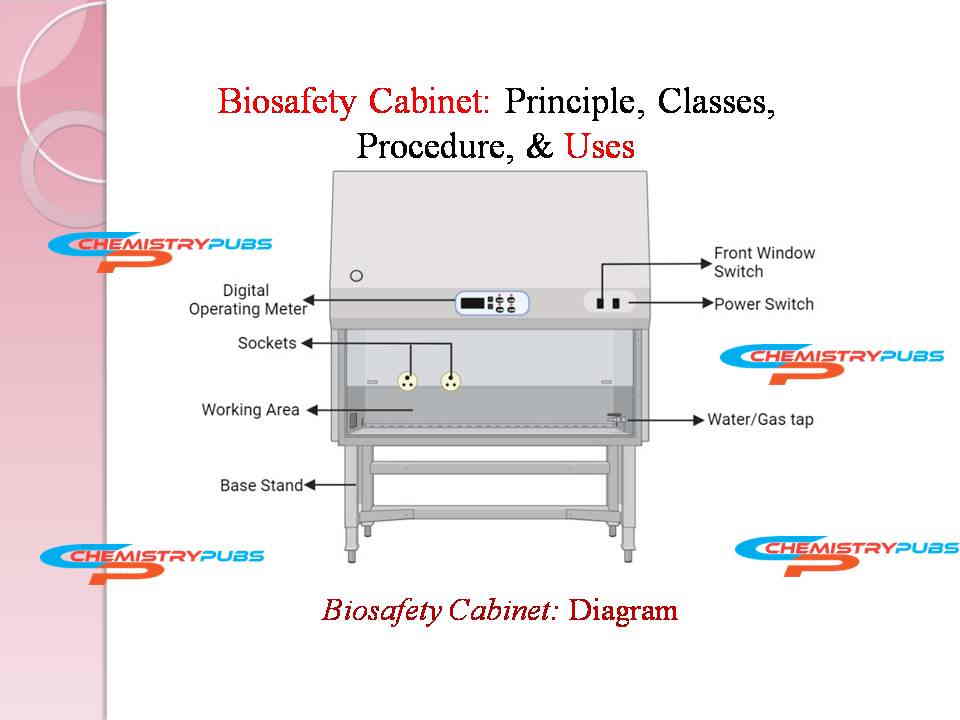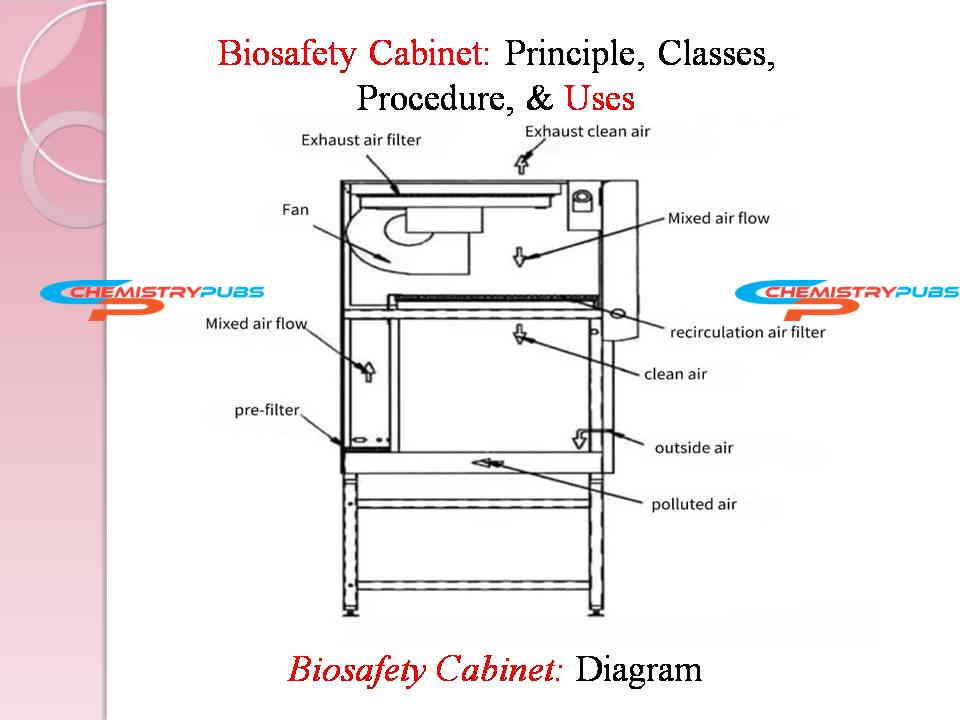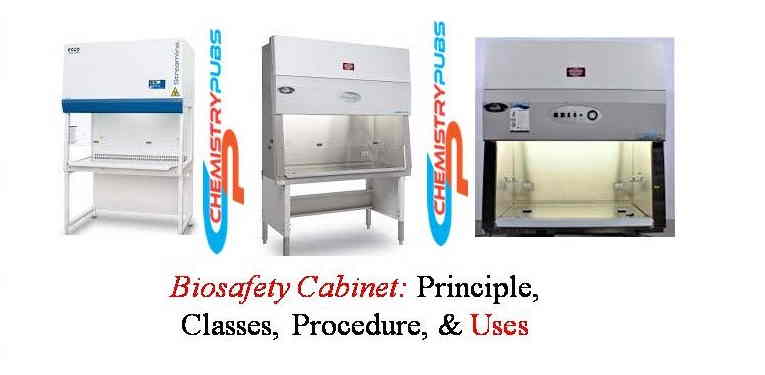A Biosafety Cabinet or BSC is advanced enclosed equipment used to handle hazardous pathogenic materials. This piece of equipment is very essential tool for performing various types of research in laboratories ranging from basic to high containment. A well-ventilated hook is attached to this equipment for proper testing during microbiological or various chemical processes in laboratories. The main aim includes protecting the laboratory personnel and the environmental factors from pathogenic microorganisms.
This cabinet is used very much for certain risk group microorganisms and creates aerosol. HEPA filters are attached to this equipment that decontaminates the air moving out of the cabinet. It protects the sample, human, the pathogen, and environmental substances. The biological materials are sterilized properly in this equipment.
Biosafety Cabinet Definition
It is a piece of device to provide both a clean work environment and protect the employees who work with biohazards. A vertical laminar air flow can be found in this equipment which creates a barrier to airborne particles, such as microorganisms.
A High-Efficiency Particulate Air (HEPA) filter is used to provide clean air going into the work area and out to the environment. The air is generally recirculated over the work area through this filter of the biosafety cabinet device. This filter removes airborne particles from the air but does not remove chemical fumes.
Biosafety Cabinet Principle
The working principle of this equipment relates to the air receiving and removing process to keep this device in a negative pressure state and to protect the staff through vertical airflow. The air from outside is easily filtered by a High-Efficiency Particulate Air filter (HEPA filter) and then enters this cabinet to avoid contamination of the processed samples. It needs to filter the entering air into this cabinet before being discharged into the atmosphere to protect our environmental factors.
Biosafety Cabinet Functions
The main function of this cabinet is to prevent human and environmental factors from being exposed to the negative pressure filtration fume hood of bioaerosols generated during the various experiments. It helps to prevent any type of laboratory-acquired infection.
Biosafety Cabinet Diagram

Biosafety Cabinet Operating Procedure
It should move the arms in and out slowly during the experiment in this equipment.
It must be placed perpendicular to reduce the disruption of the air curtain.
It must perform all experimental operations at least 5 inches from the front grille on the work surface.
It must avoid hazardous materials out of the BSC until they have been surface decontaminated.
It can be placed disposable underpadscan on the work surface and avoid covering the front or rear grille openings.
All the experimental materials must be placed as far back in the BSC as practical and away from the front grille of the BSC.
An aerosol-generating equipment like a vortex mixer or tabletop centrifuge must be placed toward the rear of the BSC.
It must avoid placing any objects like papers, notebooks, etc. on the front grille.
Any lightweight items like pipette sleeves, paper towels, and Kimwipes must be removed from BSC to reduce the potential of being drawn into the containment.
It should apply appropriate disinfectant after completing the experiment. The sash of BSC can be opened during the use of alcohol to evaporate this substance. The BSC sash can be opened a minimum of 10 minutes.
Biosafety Cabinet Classes
There are many classes of this cabinet which discussions are given below:
Biosafety Cabinet Class 1
This class is the basic type that helps to protect the environment and the laboratory personnel. This piece of equipment is essential to use specific equipment like centrifuges or for procedures like aerating cultures. This cabinet can be connected to the building exhaust system or recirculating filtered exhaust back into the laboratory.
The air inside this equipment from outer space is removed easily from the operator towards the HEPA filter. The air is sterilized via this filter before discharging it to the environment. This cabinet helps to protect our environment, humans, and insects from the aerosol but not the sample.
Biosafety Cabinet Class 2
This cabinet helps to protect both the samples and the environment. A fan is mounted rapidly on the top of this cabinet that draws a curtain of sterile air over the workplace where the biological experiments are being handled. The air can move underneath the working place and back up to the top of the cabinet before entering through the HEPA filters. The air then moves underneath the workstation and back up to the top of the cabinet before passing through the High-Efficiency Particulate Air filter media. The air in this equipment acts as a barrier against the contaminated air coming back out to the operator.
Biosafety Cabinet Class 3
This type is completely enclosed but ventilated cabinets. All of the air circulation can enter or leave the facility by passing through a High-Efficiency Particulate Air filter. Many rubber gloves are provided with this equipment for running this equipment. A transfer chamber is seen that facilitates the sterilization of materials. Gloves prevent direct contact between the operator and the samples. A High-Efficiency Particulate Air filter is attached to this device for treating the exhaust air.
All of the above classes’ biosafety cabinet provides maximum protection to the human, the environment, and the experimental sample against pathogenic organisms.
Applications of Biosafety Cabinet
This equipment is widely used in scientific research, teaching, and clinical testing. A lot of research and tests related to microbiology, biomedicine, genetic engineering, and biological products can be done safely with this equipment. This cabinet is crucial equipment that creates a first-level protective barrier for laboratory biosafety purposes. This equipment is an essential piece of equipment for the handling and culturing of cell cultures and bacteria.
It provides a controlled and sterile environment for working with various biological samples and protects the operator and the samples from contamination. It can be prepared various samples for handling polymerase chain reaction (PCR) purposes. The various types of antibodies or antigens can be identified in this device for research or diagnostic purposes and ensure a clean environment and minimize the risk of contamination. This device is the first choice for providing a safe and controlled workspace and manipulating these samples.
Advantages of Biosafety Cabinet
This equipment provides a high level of protection for the operator, samples, and the surrounding environment.
The HEPA filter includes this device ensuring that harmful biohazardous aerosols and particles are free from this cabinet and minimizing the risk of exposure to the user.

This equipment is easy to maintain and use because it has a simple design.
The various parts like HEPA filters and exhaust systems can be easily maintained and replaced.
Limitations of Biosafety Cabinet
This equipment does not provide comprehensive operator protection.
Sometimes, It produces high-level aerosols with highly infectious or hazardous materials.
Precautions
It must avoid any type of airflow disruption through this equipment as well as any blocking of the air grills with equipment, waste, materials, etc. It should minimize the movement through the front access opening and room traffic in front of the cabinet. It is very important to avoid open flame according to manufacturer recommendations. It must avoid overloading the cabinet.
This cabinet must be free from UV light because this light creates serious eye and skin injuries. This equipment must be cleaned and disinfected before and after use with approved disinfectant. This device should be maintained always by disinfecting thoroughly under the grill, tray, inner walls, and window sash.
Frequently Asked Questions (FAQ’s)
What is a biosafety cabinet?
It is advanced enclosed equipment used to handle hazardous pathogenic material and protects the operator, samples, and the surrounding environment.
What are the uses of biosafety cabinets in the laboratory?
This equipment is used in the fields of microbiology, biomedicine, and genetic engineering for creating various biological products safely.
What are the functions of biosafety cabinet?
It prevents the hazardous materials in humans and our environmental factors from being exposed to the negative pressure filtration fume hood of bioaerosols generated during the various experiments.
What are the parts of a biosafety cabinet?
It includes valves, work surfaces, door motors, gloves, fans, adjustable stands, HEPA filters, baskets, etc.
What is the principle of biosafety cabinet?
The working principle of biosafety cabinets relates to the air receiving and removing process to keep this device in a negative pressure state and to protect the staff through vertical airflow.

